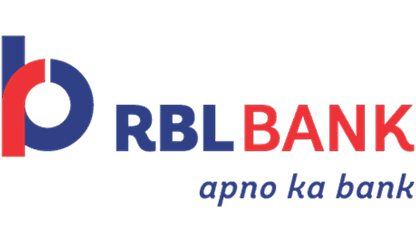- Make the move to e-commerce marketplaces. An important trend that is reshaping the steel industry is the wholesale shift to online e-commerce for steel purchases. MSMEs have realised a direct reduction in costs by moving away from offline procurement. Online platforms minimise major supply chain and logistics costs for MSME businesses while eliminating supply shortages since the required steel intermediate products are stocked in advance by the seller’s platform.
On e-commerce platforms like JSW One MSME, customers also have the freedom to choose from a wide variety of products on offer, helping businesses find the steel that best suits their needs without investing time in evaluating dozens of different vendors. Additionally, credible online platforms only sell certified graded steel from reputed steel producers, putting an end to any quality concerns.
Online steel purchase also allows flexibility in order volumes, and allows for a variety of payment methods, doing away with administrative time wasted on low-value procurement tasks.
- Timely course corrections to leverage governmental measures more effectively. The government has been quick to react to arrest or at least stabilise some of the price fluctuations in the steel market. A slew of recent measures announced in March – April 2022 are expected to bring the prices down by a tolerable but significant 10 – 15% by Q3 2022.
The measures include a partial ban on steel exports to invigorate local supply, an export duty levied on exports of finished steel products, combined with a customs duty waiver on the import of raw materials such as coking coal and ferronickel to boost primary steel producers. Duty on exports of iron ore has been hiked by as much as 50%, while the export duty on steel intermediaries has been hiked by 15%.
The recent reduction in fuel prices is further expected to ease steel intermediate input costs by lowering logistics and supply costs for MSMEs.
While these macroeconomic steps are likely to give a major fillip to the domestic steel industry, MSMEs need to strike while the iron is hot and leverage the conducive business environment before a market downturn or any future policy revisions. Prices of TMT have hit a low of Rs 52,000 per MT in May. With attractive discounts available on online platforms like JSW One on the purchase of TMT bars, hot- and cold-rolled coils, you have the opportunity to stock up inventory before inflationary pressures cause steel price fluctuations again.
- Intelligent pricing. The steel market situation presents a good opportunity for MSMEs to revisit their pricing strategies. MSMEs typically price on a reactive basis, increasing the risk of financial losses due to market fluctuations. Expert forecasts are prone to parallax errors and biases.
Many MSMEs are opting to move to technology-enabled dynamic pricing, instead. In dynamic pricing, the cost of a product is set in real-time, with a flexible approach that helps a company that sells goods over the internet to adjust prices in response to market demand. E-commerce platforms allow for dynamic pricing, and can also help MSMEs improve their margins by introducing products with the highest fair price (inspired by the Dutch flower auction method). A combination of the flower auction technique with FCFS (first come, first served) can further enhance the pricing model. This can help MSMEs maximise returns under prevailing market conditions, while at the same time eliminating overspending on excess inventory on the supply side. The net effect is a significant positive impact on inventory to cash and improved overall margins.
With the advantages of dynamic pricing self-evident, several MSMEs in the real estate and construction sector have already made the move to e-commerce platforms for all their steel needs.
JSW One’s online platform is custom-built to meet the unique needs of MSMEs looking to insulate their business against steel price fluctuations. Learn more here.
- Contract build model and MoUs. Shifting to a build-to-contract model can help MSMEs insulate against market fluctuations in raw material prices. Since such contracts operate under a fixed cost arrangement (where the price is fixed against an external benchmark at contract execution), they can help insulate against future price fluctuations.
Alternatively, MSMEs can also opt for contracts with clauses allowing for adjustments to price under "changed circumstances" or "fair/equitable adjustments", with the appropriate trigger criteria laid out in the contract. This can protect the MSME against major price fluctuations by transferring the cost to the client as stipulated in the contract. The clauses could link the trigger points to external price indices, published prices, or take recourse to a certified bid cost agreed upon between both parties beforehand.
If you also supply government infrastructure projects, consider bidding for BOT contracts instead of fixed-price contracts. In the Build - Operate - Transfer model, the MSME is also responsible for initial operations of the facility, and all profits accrue to the business. This can help you recover additional costs incurred on raw materials during production.
On the supply side, MSMEs could consider entering into an MoU for material consumption with raw materials suppliers for a fixed length of time. With an MoU, firms can benefit from attractive price rebates on bulk orders (based on contract length), helping offset any fluctuations in raw material costs.
Recent developments have led to a pronounced transformation of the Indian steel market into a volatile, uncertain, complex, and ambiguous VUCA environment. As the saying goes, a stitch in time saves nine – Indian real estate, construction, and manufacturing MSMEs would be wise to take proactive corrective measures to combat the steel price hike in India, and not wait until it’s too late.
References:
https://www.thehindubusinessline.com/markets/commodities/rising-steel-prices-to-hit-the-auto-and-real-estate-sector-hard/article34217021.ece
https://www.business-standard.com/article/companies/very-large-cost-hike-for-steel-industry-can-come-next-qtr-seshagiri-rao-122032700412_1.html
https://www.cogoport.com/blogs/soaring-steel-prices-in-india-their-impact-on-production-exports-profits
https://www.moneycontrol.com/news/business/steel-prices-likely-to-fall-by-up-to-15-in-domestic-market-eepc-8559951.html
https://www.business-standard.com/article/markets/steel-prices-likely-to-fall-to-rs-60-000-tonne-by-march-crisil-report-122050900507_1.html
https://economictimes.indiatimes.com/markets/stocks/news/a-decline-in-steel-prices-can-imply-de-rating-of-steel-stocks/articleshow/91785280.cms
https://www.business-standard.com/article/companies/very-large-cost-hike-for-steel-industry-can-come-next-qtr-seshagiri-rao-122032700412_1.html
https://www.accenture.com/us-en/blogs/chemicals-and-natural-resources-blog/steelmakers-new-intelligent-pricing-tools





 +91 7208055523
+91 7208055523
 Help & support
Help & support
